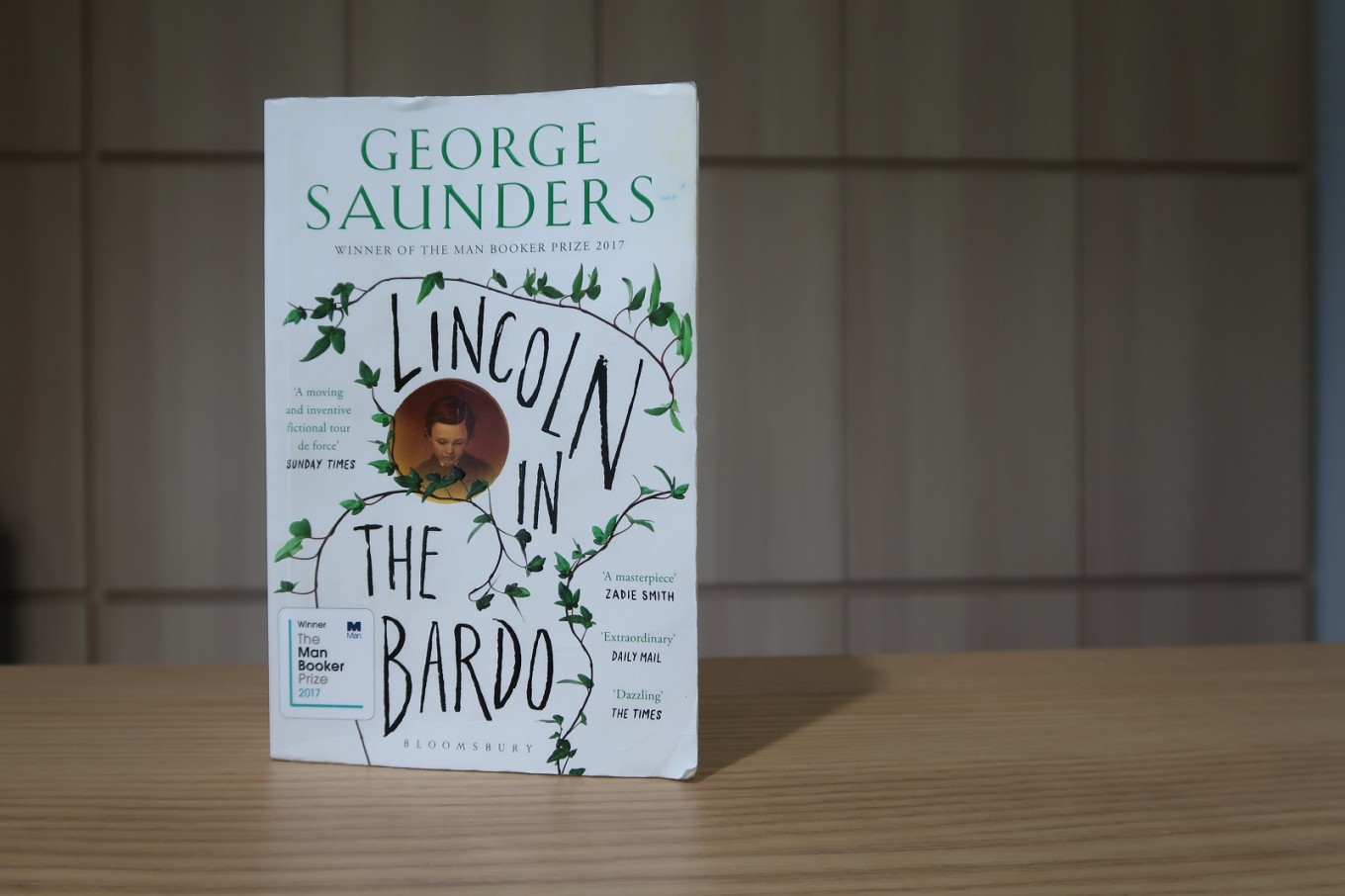Book Review: ‘Lincoln in the Bardo’ is moving account of death, afterlife
Through his immense storytelling, George Saunders has managed to capture the pathos of everyday life in Lincoln in the Bardo.
Change text size
Gift Premium Articles
to Anyone
 In his much-awaited first novel titled Lincoln in the Bardo, George Saunders has written a historical tale on what feels like a diorama of a cemetery coming to life. (JP/Devina Heriyanto)
In his much-awaited first novel titled Lincoln in the Bardo, George Saunders has written a historical tale on what feels like a diorama of a cemetery coming to life. (JP/Devina Heriyanto)
I
n his much-awaited first novel entitled Lincoln in the Bardo, George Saunders has written an historical tale on what feels like a diorama of a cemetery coming to life; ghosts moving around in each scene telling fellow ghosts how their life used to be and warning them of what is to come along, with backdrops of loved ones trying to cope with their death.
Lincoln in the Bardo is built around the death of Abraham Lincoln’s beloved 11-year old son Willie, who succumbed to typhoid fever in February 1862 during the American Civil War. Willie is interred in a crypt in the Oak Hill Cemetery near Georgetown where a grief-stricken Lincoln visits at night to hold and mourn his boy, the events striking a growing point of this extraordinary story.
The cemetery is populated by the spirits of the dead, those who are unwilling to complete their journey to the afterlife. Although not explained by Saunders, it is a logical reference to the “Bardo”, a Tibetan Buddhism name for the transition period between death and rebirth. In this case, the purgatory inhabited by the spirits is Oak Hill Cemetery.
The story unfolds as Lincoln’s grief-filled visit tempts Willie to stay in the Bardo, something that endangers him as those who stay are subject to psychic deterioration and body disfigurement. The story tells how children like Willie are expected to pass on quickly into the afterlife. Through the narration of three spirits -- Bevin, Vollman, and the Reverend Early -- they make it their task to save Willie from this disastrous fate, their actions focusing on their attempts to influence Lincoln to move on from his son’s death.
In its form, the book is narrated like a film script, alternating dialogues and monologues between spirits in the cemetery and interjecting facts and semi-facts (collected from numerous books and news accounts) of the American Civil War era. The latter helping to describe America and the Lincoln family’s state surrounding Willie’s death.
Read also: Book Review: 'This is How It Ends', flip-flopping but enjoyable thriller
To be honest, the book was a hard read at first. It is not conveyed in the usual narration and this immediately struck me. But after adjusting to it did I realize what a literary genius Saunders is.
Through his immense storytelling, Saunders has managed to capture the pathos of everyday life: a father mourning the loss of his child amid a raging war, spirits of the dead contemplating their missed opportunities and biggest regrets in life, the dead wishing to see the living. Moments of dark humor are also carefully slipped into the story.
The spirits of Oak Hill Cemetery themselves somehow represent a portrait of a dynamic community, each dispossessed in their own way. One spirit belongs to a disgraced clerk. Another belongs to a young man who committed suicide after the man he loved rejected his affection. Another three are of a mother who left three young girls, and a couple who were killed when drunk. Other spirits include that of a soldier, a rape victim, and many more.
What Saunders has voiced with virtuosity is the emotion of each character; Lincoln with his tough effort to move past Willie’s death and Willie coming to terms with his fate. Even though Lincoln and Willie are the two main characters in the story, it is the voices of the spirits that become the major tipping point.
The voices of the spirits, in their entirety, gains emotional momentum as the story progresses, they each learn to feel compassionate and sympathetic for each other, and what you are left with are stories that turn Lincoln’s personal grief into a meditation on the losses America suffered during the Civil War.
So, while this book may not cater everyone’s taste, it is worth the read. It teaches you the meaning of life -- taken from the perspective of the spirits, and makes you realize how Saunders has beautifully portrayed Lincoln. (anm/kes)










